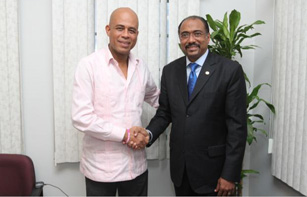In a new report, entitled Women out loud, UNAIDS explores the impact of HIV on women and the instrumental role women living with the virus are playing to end AIDS. It includes the latest data and commentary from some of the leading advocates on women and HIV.
The report includes the voices of some 30 women living with HIV who have given their personal insights into how the epidemic is affecting women and on how women are actively working to reduce the spread and impact of AIDS.
HIV is continuing to have a disproportionate effect on the lives of women. It is still the leading cause of death for women of reproductive age, and gender inequalities and women’s rights violations are persistent in rendering women and girls more vulnerable to HIV and preventing them from accessing essential HIV services.
“Achieving zero new HIV infections, zero discrimination and zero-AIDS related deaths will require accelerated action for women and girls,” said Michel Sidibé, Executive Director of UNAIDS. “Women must have access to education and knowledge as well as being empowered to protect themselves from HIV. We must listen to their needs, their voices and transform their words into action.”
Every minute, one young woman is infected by HIV
The infection rates among young women aged 15-24 are twice as high as in young men, highlighting the impact HIV is having on young women’s lives. The disparity is most pronounced in sub-Saharan Africa, where 3% of young women are living with HIV.
Comprehensive sexuality education is critical for all young people to ensure that they can protect themselves from HIV, especially young women. However the percentage of young women who can correctly identify ways of preventing HIV is still very low in many countries with high HIV prevalence.
“Today around 60% of adults living with HIV in the most affected regions are women––we need to take urgent action,” said the Executive Director UN Women Michelle Bachelet. “To make our response more effective, we need more women in decision-making, more access to information and services for sexual and reproductive health, and more focus on promoting and protecting the rights of women and girls.”
Gender inequalities critically influence the risk of HIV infection
Much progress is needed is in ensuring gender equality and respect for women’s sexual and reproductive health and rights, especially those of women living with HIV. Harmful gender norms and a lack of economic empowerment are rendering women more vulnerable to acquiring HIV through sexual transmission.
“Improving women’s social and economic status and enhancing their decision making power reduces the risk of HIV infection,” said Jennifer Gatsi, Executive Director of the Namibian Women’s Health Network.
To make our response more effective, we need more women in decision-making, more access to information and services for sexual and reproductive health, and more focus on promoting and protecting the rights of women and girls
UN Women Executive Director, Michelle Bachelet
Marginalised women remain the most impacted by HIV
Sex workers and people who use drugs are particularly vulnerable to HIV. When sex is exchanged for money or drugs, women often exert little influence over a partner’s condom use. Female sex workers are 13.5 times more likely to be living with HIV than other women. Some countries reported an HIV prevalence rate of more than 20% among female sex workers in capital cities. Studies conducted in nine European Union countries have indicated on average a 50% higher prevalence of HIV among women who inject drugs than in men who inject drugs.
End new infections among children and keep their mothers alive
Since UNAIDS launched the Global Plan to stop new HIV infections in children and keep their mothers alive, new infections in children in sub-Saharan Africa have fallen by nearly 25% (2009 to 2011). This represents a huge step towards achieving zero new HIV infections in children by 2015.
However, stigma and discrimination or the threat of stigma and discrimination are still preventing many women from accessing prenatal care services. Almost two of every three pregnant women in low- and middle- income countries do not know their HIV status.
It is critical to protect the sexual and reproductive health and rights of all women living with HIV. This includes their right to access voluntary and confidential HIV testing and counselling, accurate and non-judgemental information, quality treatment and services, and to bear children in a safe environment, free of stigma, discrimination and violence.
Laws and policies to protect the rights of women living with HIV
Laws and policies should protect women and girls, however there are many that exist that actually punish, stigmatize and discriminate against women living with HIV, creating a significant barrier to women accessing both harm-reduction and HIV-related services. The report highlights the need for changes in laws, policies, programmes and practices, and calls for women to be an integral part of policy-making and programming.
Improving women’s social and economic status and enhancing their decision making power reduces the risk of HIV infection
Jennifer Gatsi, Executive Director of the Namibian Women’s Health Network.
Women out loud provides an in depth insight into the many challenges faced by women and particularly women living with HIV. It also offers a snapshot of how women are shaping the response to HIV and the importance of their active involvement in decision making and programming.
The foreword of Women out loud is signed by Michel Sidibé, Executive Director of UNAIDS, Michelle Bachelet, Executive Director of UN Women and Jennifer Gatsi, Co-founder and Executive Director of the Namibian Women’s Health Network. The report was formally launched at the Polish mission in Geneva on Tuesday 11 December 2012 by the Under Secretary of State, Ministry of Health of Poland and Chair of the 31st PCB, Igor Radziewicz-Winnicki and His Excellency Remigiusz A. Henczel, Ambassador Extraordinary and Plenipotentiary, Permanent Representative of the Republic of Poland to the United Nations Office and other international organizations in Geneva.















